Children use imitation, cause and effect, and trial and error to build their logic and reasoning skills. Children learn these skills through everyday interactions with their caregivers. From very early on, children discover that their own actions and behaviors have an impact on the behaviors and actions of people and objects. For example, children cry to signal needs and their caregivers respond to meet these needs.
Once they are able to grasp and manipulate objects, children use imitation to interact with objects. For example, children may bang a toy drum immediately after observing their caregivers perform the same action. They learn about cause and effect by repeating the same actions over and over in order to produce the same results. For example, they repeatedly drop an object off an elevated surface to engage their caregivers in picking it up, as well as to hear the sound it makes when it falls.
During the second year, children’s logic and reasoning skills improve as they use trial and error to solve problems. They have a better understanding of patterns of, and relationships between, the impacts of certain behaviors on objects and people, and begin to use these patterns in different ways. For example, children may use different ways to move objects; at first, they may use their hands, and then attempt to use another body part, such as their feet or head.
At 24 months of age, children know that selective actions affect different objects and people in different ways. They understand the intended function of objects and, by 36 months of age, can communicate cause and effect, and problem-solve more effectively.
Birth to 9 months
Children begin to build awareness and use simple actions to have an impact on objects and people in their environment.
Indicators for children include:
- Uses nonverbal and verbal communication to generate responses from caregiver(s), e.g., coos, reaches, laughs
- Repeats similar actions on different objects, e.g., shakes stuffed animal in the same manner as a rattle to hear noise
- Looks for and finds an object that has fallen
Strategies for interaction
- Participate in social interactions the child initiates
- Provide interesting toys that can be easily manipulated, e.g., squeezed, shaken, rattled
- Play turn-taking games with the child, e.g., peek-a-boo
7 months to 18 months
Children combine specific actions to have an effect on people and objects, and interact with people and objects in different ways to discover what will happen.
Indicators for children include:
- Uses objects as they are intended, e.g., pretends to drink milk out of a toy bottle
- Attempts different ways to move an object to see what happens, e.g., rolls a ball gently at first and then hard to see how fast and far it will move
- Uses different actions for an intended result, e.g., builds tower with blocks and then knocks it down with his or her hand, repeats the activity and uses his/her head to make the tower tumble
- Imitates adult’s body language and simple actions, e.g., puts hands on hips or pretends to brush crumbs off table
Strategies for interaction
- Allow the child to explore a variety of toys
- Narrate the child’s play: “Look how hard you rolled that ball”
- Allow the child freedom to try new things with some support
- Demonstrate and explain the relationship between objects and/ or people
16 months to 24 months
Children understand how purposeful and select actions can affect different objects and people. Children also begin to connect objects and ideas based on repetition and experience.
Indicators for children include:
- Repeats actions over and over to cause desired effect, e.g., dumps out a bucket and refills it with objects
- Starts to predict the consequence of simple and familiar actions, e.g., knows that flipping the light switch will either turn on or turn off the light
- Understands functionality of objects, e.g., mop is used to clean the floor
- Begins to understand certain behaviors are related to certain contexts, e.g., behaves differently at childcare than at home
Strategies for interaction
- Provide the child with experiences that demonstrate cause and effect, e.g., objects that produce sounds after performing a specific action
- Show and explain what objects do and what they are used for during everyday interactions
- Narrate sequencing found in everyday interactions, e.g., “First we will fill the tray with water, then we will put toys in it.”
21 months to 36 months
Children have a greater understanding of causation and can predict and choose specific actions to attain a desired result. Children also begin to apply past experiences and knowledge to form ideas.
Indicators for children include:
- Recognizes actions and objects and can generalize meaning, e.g., sees someone opening an umbrella and can attribute that to the fact that it may be raining
- Makes a prediction of what will happen next in a sequence of events
- Applies past experiences to new situations
- Expresses cause and effect in certain situations, e.g., “I fell down and now I have a boo-boo.”
Strategies for interaction
- Use stories and everyday conversations to ask the child to predict what may happen next
- Use child’s past experiences to bridge to new experiences, e.g., using chalk on the sidewalk to scribble instead of crayon and paper
- Discuss and experience cause and effect in everyday interactions, e.g., add food coloring to the water table and show the child what happens
Real World Story
Quinn is 13 months old and is playing in his playroom. He is standing against a small table, playing with a toy kitchen. He is attempting to place a plastic cup inside the pretend kitchen’s oven, but he is not able to shut the oven door. He becomes frustrated and throws the plastic cup on the ground. His mother, Kate, is sitting close by. She leans forward and picks up the plastic cup. She scoots closer to Quinn and says, “I can see you are frustrated; let me see if I can help you.” She looks in the oven, points inside, and says, “Quinn, there is a plate in there. Can you hand me the plate?”
Quinn looks at Kate, then looks at where she is pointing. He leans in and grabs the plate. He hands it to Kate, who says, “Now try,” and hands him the plastic cup. Quinn moves the cup around and eventually gets it to fit inside the oven. Kate smiles, claps, and says, “You did it!” Quinn smiles, bounces up and down, and then claps his hands. He squeals with delight and opens the oven again. He grabs the cup and attempts to put it back in. He moves the cup around a few times until he gets it to go back in the oven. Once again he is successful. Kate claps and says, “Again! You did it again!” Quinn squeals, bounces up and down, and claps his hands.
Discover how this Real World Story is related to:
- Self-Regulation: Foundation of Development
Emotional Regulation - Self-Regulation: Foundation of Development
Attention Regulation - Developmental Domain 1: Social & Emotional Development
Attachment Relationships - Developmental Domain 1: Social & Emotional Development
Self-Concept - Developmental Domain 3: Language Development, Communication, & Literacy
Receptive Communication - Approaches to Learning
Persistence, Effort, & Attentiveness
THIS EXAMPLE DEMONSTRATES how logic and reasoning begins in the first year. Quinn is having a hard time figuring out how to get the cup into the oven. He is persistent but easily frustrated. Quinn does not have the expressive language to say “help,” but demonstrates this need by throwing the cup. His mother reads this signal and helps him regulate by acknowledging his feelings and helping him solve the problem. Quinn demonstrates his receptive language skills by finding the plate and handing it over to his mother. He uses trial and error to accomplish his goal, as he moves the cup around until he gets it to fit. Kate supports Quinn’s selfconcept development, as she encourages him and genuinely shares in his accomplishment. Quinn’s positive reaction demonstrates his enthusiasm and joy in reaching his goal.
Discover how Logic & Reasoning is related to:
- Self-Regulation: Foundation of Development
Attention Regulation - Developmental Domain 1: Social & Emotional Development
Relationship with Adults - Developmental Domain 1: Social & Emotional Development
Self-Concept - Developmental Domain 3: Language Development, Communication, & Literacy
Receptive Communication - Developmental Domain 3: Language Development, Communication, & Literacy
Expressive Communication - Approaches to Learning
Problem Solving - Approaches to Learning
Persistence, Effort, & Attentiveness


 Printer-friendly PDF
Printer-friendly PDF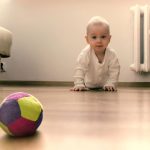
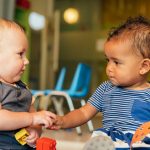
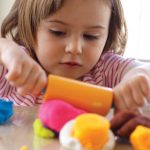
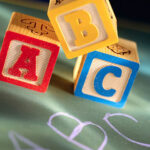
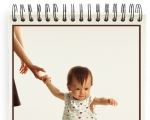
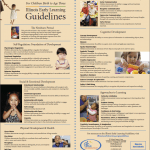
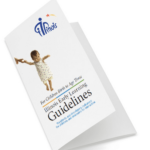

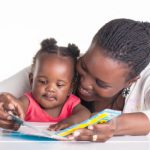
 Printer-friendly PDF
Printer-friendly PDF